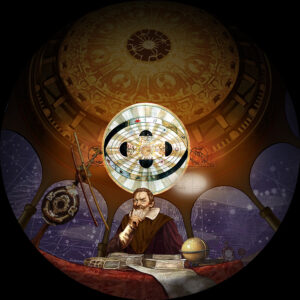Picture a cold winter night in Northern Norway. The sky is crystal clear, revealing millions of stars scattered across the heavens, making you feel the immense scale of the universe and the smallness of our Earth within it. The chill in the air is sharp, but your warm winter clothes wrap you in comfort. It’s that special kind of warmth and contentment we Norwegians describe as cozy.
Just as you’ve managed to identify the familiar stars, a faint green veil begins to unfurl across the sky. At first, it’s subtle, almost ethereal, but the enigma of its glow holds your gaze captive. Then, in an instant, the sky erupts. Brilliant green light bursts across the horizon, filling every inch of your view. The aurora dances and swirls with a mesmerizing grace, as if it’s proudly displaying its extraordinary power and beauty. You instinctively reach for your camera, but the sheer awe of the moment roots you in place. And you’re content with that—completely immersed in the wonder of being present, right here, right now.
This was our Thursday night. We grew up here in the north and the Green Lady has taken our breath away countless times. And she still does.

Northern Lights, Aurora Borealis, Polar Light, Lady Aurora.
We have many names for the things we love, and The Northern Lights are among the most beloved.
It’s no wonder this phenomenon has captivated human hearts for millennia. References to the aurora can be found in the writings of Aristotle, Pliny the Elder, and Seneca, each trying to describe its mysterious beauty. Even ancient Chinese texts from 4,000 years ago document what appears to be the Aurora Borealis. The name we use today, “Aurora Borealis,” meaning “dawn of the north,” was given by the Italian polymath Galileo Galilei, capturing both the wonder and the majesty of this celestial display.
In the North, the Vikings held a deep connection to the Aurora Borealis. They believed the lights were the spirits of dancing virgins, waiting to welcome them into Valhalla. Some also speculate that the Aurora Borealis might have been what the Vikings referred to as Bifrost, the shimmering bridge between Midgard (Earth) and Åsgard (the realm of the gods)

The Sami people, who settled in the northern regions of Scandinavia around 12,000 years ago, also share a profound connection with the Northern Lights. They refer to it as guovssahas, meaning “the light you can hear.” In Sami tradition, the Northern Lights are believed to be the spirits of ancestors, and they must be treated with the utmost respect. When the lights grace the sky, it is forbidden to whistle, joik (traditional Sami singing), or make loud noises, as a sign of reverence for the presence of these ancestral spirits.
This belief has been passed down to Norwegian settlers, who still caution their children not to provoke the Northern Lights. They warn that waving a white piece of cloth could attract the lights, and they’ll come for you. Naturally, as kids, we couldn’t resist testing this, waving our cloths at the sky—just for a moment—before sprinting away in a mix of fear and exhilaration.
The science behind the Aurora
Systematic research on the Northern Lights began in the 17th century. Swedish astronomer Anders Celsius was instrumental in discovering the connection between the aurora and fluctuations in Earth’s magnetic field, as well as the influence of solar activity on the intensity of the lights.
The first comprehensive theory of the Northern Lights was proposed by Norwegian physicist Kristian Birkeland in 1886. He demonstrated that the lights are produced when electric currents from the sun interact with Earth’s magnetic field, pulling charged particles into the atmosphere, where they excite atmospheric gases and cause them to glow. Birkeland’s groundbreaking work laid the foundation for ongoing aurora research, which remains an active field of study. In Norway, two research stations continue to explore the mysteries of the Northern Lights by launching research rockets into the atmosphere—one in Svalbard and another in Andøya, Vesterålen, just a short 20-minute flight from Tromsø.
Chasing the Northern Lights
“Where is the best place to see the Northern Lights? And when? Can you spot them from the campsite or even from the city?” We hear these questions every day, and we’re always thrilled to guide you to the perfect viewing spot!
- As Kristian Birkeland demonstrated, the Northern Lights are created when electrically charged particles from the sun collide with our atmosphere. This means that solar activity determines whether the aurora will appear. Fortunately, the sun is usually active, and we rely on Aurora Forecast apps to anticipate when the lights will be visible.. Check out this one from the University of Tromsø, for example.
- Clear skies are essential for viewing the Northern Lights. Since the aurora occurs at altitudes of 80 kilometers or more, even a thin layer of clouds can obscure the display. Always check the local weather forecast and choose a location where the skies are expected to be clear.
-
Darkness is key to experiencing the Northern Lights at their best. The aurora isn’t a particularly strong light source, so your surroundings should be as dark as possible for optimal viewing. While the Northern Lights are present year-round, they’re hidden from view during the bright summer months. To avoid light pollution from the city when chasing the aurora, it’s important to seek out darker areas. Fortunately, our campsite is perfectly situated just outside the city, offering an ideal spot to relax in your cabin and watch the Northern Lights right from your doorstep.

If you’re looking for a guided experience, where you’ll be taken to the best spots to see the Northern Lights, enjoy a warm cup of coffee or tea, and hear fascinating stories about the aurora, we can help you book it right here at the reception. We’re also happy to assist you with checking the aurora borealis forecast and local weather conditions.
